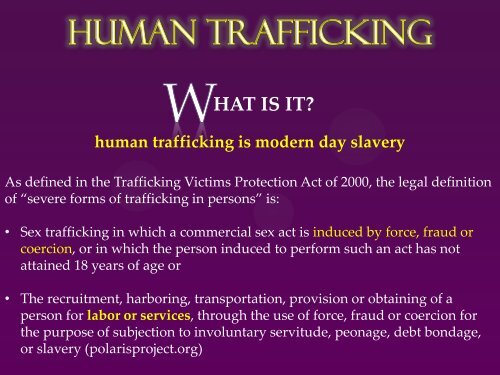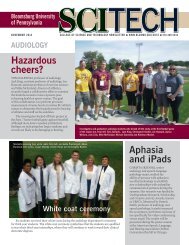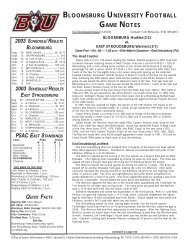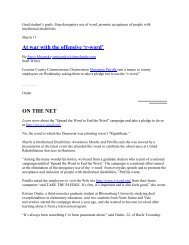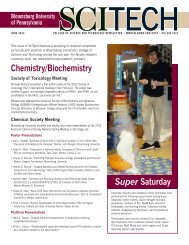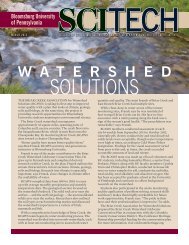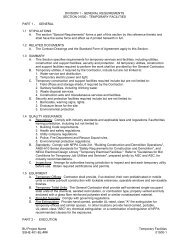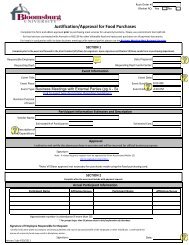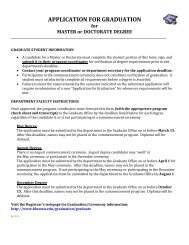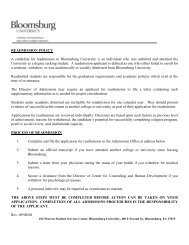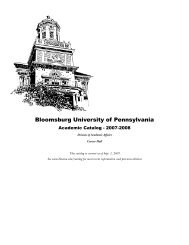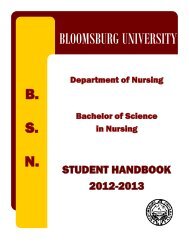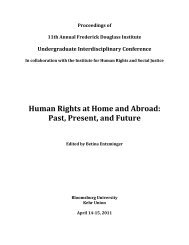Human Trafficking
Human Trafficking
Human Trafficking
Create successful ePaper yourself
Turn your PDF publications into a flip-book with our unique Google optimized e-Paper software.
HAT IS IT?<br />
human trafficking is modern day slavery<br />
As defined in the <strong>Trafficking</strong> Victims Protection Act of 2000, the legal definition<br />
of “severe forms of trafficking in persons” is:<br />
• Sex trafficking in which a commercial sex act is induced by force, fraud or<br />
coercion, or in which the person induced to perform such an act has not<br />
attained 18 years of age or<br />
• The recruitment, harboring, transportation, provision or obtaining of a<br />
person for labor or services, through the use of force, fraud or coercion for<br />
the purpose of subjection to involuntary servitude, peonage, debt bondage,<br />
or slavery (polarisproject.org)
HY SHOULD WE CARE?<br />
it happens in the United States!<br />
Hundreds of thousands of minor US citizens are estimated to be at risk of<br />
commercial sexual exploitation (polarisproject.org)<br />
National <strong>Human</strong> <strong>Trafficking</strong> Resource Center (calls for tips on human<br />
trafficking):<br />
• The US is principally a transit and destination country for trafficking<br />
persons. 14,500 to 17,50 people (women and children) are trafficked to the<br />
US annually (humantrafficking.org)<br />
• Cases of human trafficking have been reported in all fifty states (ungift.org)
HY SHOULD WE CARE?<br />
it happens in the United States!<br />
Hundreds of thousands of minor US citizens are estimated to be at risk of<br />
commercial sexual exploitation (polarisproject.org)<br />
National <strong>Human</strong> <strong>Trafficking</strong> Resource Center (calls for tips on human<br />
trafficking):<br />
• In 2010, there were 11,874 calls; 205 of which were from PA<br />
• Of those calls from PA: 5 were from Allentown, 1 from Bloomsburg, 8 from<br />
Erie, 8 from Harrisburg, 3 from Hershey, 46 from Philadelphia, 23 from<br />
Pittsburgh, 9 from Reading, and 6 from York
ENERAL INFORMATION<br />
Between 12.3 million and 27 million people are enslaved in<br />
forced or bonded labor, child labor, sexual servitude and<br />
involuntary servitude at any given time<br />
• The estimated global annual profits of human trafficking and slavery is $31.6<br />
billion (US)<br />
• In 2006, there were only 5,808 prosecutions and 3,160 convictions throughout the<br />
world<br />
• For every 800 people trafficked only one person was convicted in 2006
ENERAL INFORMATION<br />
after drug dealing, human trafficking is tied with the illegal<br />
arms industry as the second largest criminal industry in the<br />
world – and it is the fastest growing (acf.hhs.gov)<br />
• Slaves are forced to work, are owned or controlled by another person, are<br />
dehumanized and treated as commodities, and are physically or psychologically<br />
constrained and unable to escape<br />
• 161 countries are reported to be affected by human trafficking by being a source,<br />
transit or destination (ungift.org)
OMEN AND CONTEMPORARY SLAVERY<br />
Sex slavery is caused by gender inequality that allows the demand for sex<br />
slaves to flourish- the belief that there is no harm to purchasing the bodies of<br />
women and girls<br />
• 79% of human trafficking victims are women and girls, also 79% of the victims<br />
of trafficking end up in sex slavery (soroptimist.org)<br />
• Women work 2/3 of the world’s working hours but earn only 10% of the world’s<br />
income, and own less than 1% of the world’s property<br />
(soroptimist.org)
OMEN AND CONTEMPORARY SLAVERY<br />
according to a recent report, of the 600,000 - 800,000 people<br />
trafficked across international borders annually, 80% are female<br />
• Because of the prevalence of gender discrimination, harmful practices such as<br />
female genital mutilation, female infanticide and pre-natal sex selection are still<br />
widespread. Additionally, the devaluation of women leads to girls and women<br />
being sold into human bondage and sexual slavery<br />
• 43% of victims are used for forced commercial sexual exploitation, of whom 98%<br />
are women and girls(Ungift.org)<br />
(soroptimist.org)
HILDREN AND CONTEMPORARY SLAVERY<br />
traffickers target 12-17 year old children as their choice<br />
candidates, because they have a longer shelf life - meaning that<br />
they can get more years out of the victim<br />
• 1.2 million children are trafficked each year<br />
• Traffickers target children most commonly from communities that lack social<br />
power, at times with consent of the parents<br />
• Parents often sell their children to recruiters for a cash profit, even though they<br />
know the child will be used for forced labor or sexual exploitation
HILDREN AND CONTEMPORARY SLAVERY<br />
traffickers target 12-17 year old children as their choice<br />
candidates, because they have a longer shelf life - meaning that<br />
they can get more years out of the victim<br />
• Because trafficking is masked as prostitution, the general public does not feel<br />
outraged<br />
• The children are perceived to be criminals or sexual deviants; or at best, victims<br />
of their environment: desperate for survival, the kids “choose” to sell their bodies<br />
for profit (ungift.org) (hagarusa.org)
OW DO THE SLAVEHOLDERS GAIN POWER<br />
OVER THEIR VICTIMS?<br />
traffickers remove recruits from their home community and<br />
shift them to a destination where they will get no support from<br />
community or law<br />
• Oftentimes the victims are taken to different countries so they don’t speak or<br />
understand the language and have no resources for escape<br />
• Slaveholders seek control over every aspect of the victim’s life so that<br />
escaping becomes unthinkable<br />
(hagarusa.org)
OW DO THE SLAVEHOLDERS GAIN POWER<br />
OVER THEIR VICTIMS?<br />
traffickers remove recruits from their home community and<br />
shift them to a destination where they will get no support from<br />
community or law<br />
• Slaveholders use violence as a means to reinforce their control and ensure<br />
compliance<br />
• The recruiters often offer money to a victim’s parents in exchange for the<br />
child (hagarusa.org)
HAT CAN WE DO?<br />
it’s simple, and anyone can do it!<br />
• Become a member of an anti-slavery organization (like the National<br />
Underground Railroad Freedom Center)<br />
• Educate yourself about contemporary slavery/human trafficking<br />
• Educate family, friends, neighbors, community organizations, churches, schools,<br />
local leaders, etc.<br />
• Organize community events to address contemporary slavery (i.e. freedom<br />
walks, candlelight vigils, etc.)
HAT CAN WE DO?<br />
it’s simple, and anyone can do it!<br />
• Create public awareness and letter-writing campaigns in your communities for<br />
local media to highlight the issue<br />
• Fundraise for anti-slavery organizations that are combating contemporary<br />
slavery worldwide through public awareness and victim assistance<br />
• Volunteer your time – intern, and/or donate your skills to assist anti-slavery<br />
organizations (i.e. website assistance, bookkeeping, etc.)<br />
• Be a conscious shopper and purchase fair-trade and slave-labor-free products<br />
from socially responsible businesses. Visit TransFairUSA for more information
HAT CAN WE DO?<br />
act locally!<br />
• Contact community leaders (i.e. mayor, police chief, councilmen, etc.) and ask if they<br />
have policies and procedures in place to assist victims who are identified. If there<br />
are none, start a community campaign to request them<br />
(freedomcenter.org)
HAT CAN WE DO?<br />
act locally!<br />
• Contact state legislators to support or introduce state-level anti-slavery legislation to<br />
supplement federal laws against contemporary slavery/human trafficking<br />
• Honorable David R. Millard<br />
240 Market Street<br />
Bloomsburg Regional Technology Center<br />
Bloomsburg, PA 17815<br />
(570) 387-0246<br />
Fax: (570) 387-4288<br />
• Senator John R. Gordner<br />
603 West Main Street<br />
Bloomsburg, PA 17815<br />
(570) 784-3464<br />
(freedomcenter.org)
ELP AND REPORTING<br />
National <strong>Human</strong> <strong>Trafficking</strong> Resource Center 1-888-373-7888<br />
All information for this site was gathered from these sites:<br />
polarisproject.org<br />
humantrafficking.org<br />
soroptimist.org<br />
ungift.org<br />
acf.hhs.gov<br />
hagarusa.org<br />
freedomcenter.org


